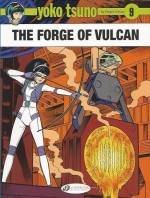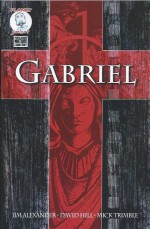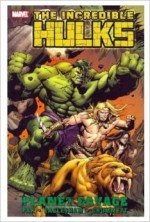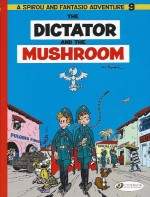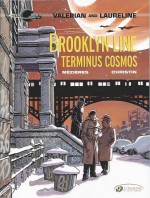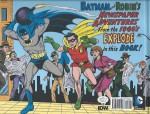
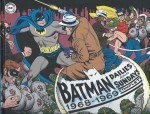
By Whitney Ellsworth, Joe Giella, Al Plastino & various (IDW)
ISBN: 987-1-63140-121-3
Win’s Christmas Gift Recommendation: Sheer Nostalgic Magic… 9/10
For more than seven decades in America the newspaper comic strip was the Holy Grail cartoonists and graphic-narrative storytellers hungered for. Syndicated across the country and often the planet, winning millions of readers and accepted (in most places) as a more mature and sophisticated form of literature than comic-books, it also paid better, with the greatest rewards and accolades being reserved for the full-colour Sunday page.
So it was always something of a poisoned chalice when a comicbook character became so popular that it swam against the tide (after all weren’t the funny-books invented just to reprint strips in cheap, accessible form?) and became a syndicated serial strip. Superman, Wonder Woman and Archie Andrews made the jump soon after their debuts and many features have done so since.
Due to a number of war-time complications, the first newspaper Batman and Robin strip was slow getting its shot, but when the Dynamic Duo finally hit the Funny Pages the feature quickly proved to be one of the best-regarded, highest quality examples of the trend, both in Daily and Sunday formats.
Yet somehow the strip never achieved the circulation it deserved, even though the Sundays were eventually given a new lease of life when DC began issuing vintage stories in the 1960s for Batman 80-page Giants and Annuals. The exceedingly high-quality all-purpose adventures were ideal short stories and added an extra cachet of exoticism for young readers already captivated by simply seeing tales of their heroes that were positively ancient and redolent of History with a capital “Hâ€.
Such was not the case in the mid-1960s when, for a relatively brief moment, mankind went bananas for superheroes in general and most especially went “Bat-Madâ€â€¦
The Silver Age of comicbooks revolutionised a creatively moribund medium cosily snoozing in unchallenging complacency, bringing a modicum of sophistication to the returning genre of masked mystery men.
For quite some time the changes instigated by Julius Schwartz (in Showcase #4, October 1956) which rippled out in the last years of that decade to affect all of National/DC Comics’ superhero characters generally passed by Batman and Robin. Fans buying Batman, Detective Comics, World’s Finest Comics and latterly Justice League of America would read adventures that – in look and tone – were largely unchanged from the safely anodyne fantasies that had turned the Dark Knight into a mystery-solving, alien-fighting costumed Boy Scout just as the 1940s turned into the 1950s.
By the end of 1963, however, Schwartz having, either personally or by example, revived and revitalised the majority of DC’s line (and, therefore by extension and imitation, the entire industry) with his reinvention of the Superhero, was asked to work his magic with the creatively stalled and near-cancellation Caped Crusaders.
Installing his usual team of top-notch creators, the Editor stripped down the accumulated luggage and rebooted the core-concept. Down – and usually out – went the outlandish villains, aliens and weird-transformation tales in favour of a coolly modern concentration on crime and detection. Visually, the art-style itself underwent a sleek streamlining and rationalisation. The most apparent change to us kids was a yellow circle around the Bat-symbol but, far more importantly, the stories had changed. A subtle aura of genuine menace had crept back in.
At the same time Hollywood was in production of a television series based on Batman and, through the sheer karmic insanity that permeates the universe, the studio executives were basing their interpretation not upon the “New Look Batman†currently enthralling readers but the rather the addictively daft material DC was emphatically turning its editorial back on.
The Batman TV show premiered on January 12th 1966 and ran for three seasons of 120 episodes, airing twice weekly for the first two. It was a monumental, world-wide hit and sparked a wave of trendy imitation. The resulting media hysteria and fan frenzy generated an insane amount of Bat-awareness, no end of spin-offs and merchandise – including a movie – and introduced us all to the phenomenon of overkill.
No matter how much we might squeal and froth about it, to a huge portion of this planet’s population Batman is always going to be that “Zap! Biff! Pow!†buffoonish costumed Boy Scout…
“Batmania†exploded across Earth and then as almost as quickly became toxic and vanished, but at its height led to the creation of a fresh newspaper strip incarnation. That strip was a huge syndication success and even reached fuddy-duddy Britain, not in our papers and journals but as the cover feature of weekly comic Smash! (from issue #20 onwards).
The TV show ended in March, 1968. As the series foundered and faded away, global fascination with “camp†superheroes – and no, the term had nothing to do with sexual orientation no matter what you and Mel Brooks might think – burst as quickly as it had boomed and the Caped Crusader was left with a hard core of dedicated fans and followers who now wanted their hero back…
However, from the time when the Gotham Guardians could do no wrong comes a second superb compilation re-presenting the bright and breezy, sometimes zany cartoon classics of Batman with Robin the Boy Wonder, augmented by a wealth of background material, topped up with oodles of unseen scenes and background detail to delight the most ardent Baby-boomer nostalgia-freak.
The fun-fest opens with more informative and picture-packed, candidly cool revelations from comics historian Joe Desris in ‘A History of the Batman and Robin Newspaper Strip: Part 2′; stuffed with behind-the-scenes set photos, communications between principal players like Bob Kane and the Producers, clippings and glorious unpublished pencils from strip illustrator Joe Giella as well as newspaper promotional materials, and is followed by compulsive pictorial essays on ‘Newspaper Strip Trivia’ and ‘Batman/Superman Crossovers’, more unpublished or censored strips and a note on the eclectic sources used to compile this collection before the comics cavorting continue…
Dailies and Sundays were scripted by former DC editor (and the company’s Hollywood liaison) Whitney Ellsworth and initially illustrated by Bob Kane’s long-term art collaborator Sheldon Moldoff, before inker Giella was tapped by the studio to produce a slick, streamlined and modern look – usually as penciller but ALWAYS as embellisher.
Since the feature was a seven-day-a-week job, Giella had often called in comicbook buddies to help lay-out and draw the strip; luminaries such as Carmine Infantino, Bob Powell, Werner Roth, Curt Swan and others…
In those days, black-&-white Dailies and full-colour Sundays were mostly offered as separate packages and continuity strips often ran different stories for each. With Batman the strip started out that way, but by the time of the stories in this volume had switched to unified seven-day storylines.
Riding a wave and feeling ambitious, Ellsworth & Giella had begun their longest saga yet in July 1967 combining the tales of ‘Shivering Blue Max with “Pretty Boy†Floy and Flo’ wherein a perpetually hypothermic criminal pilot accidentally downed the Batcopter and erroneously claimed the underworld’s million dollar bounty on Batman and Robin.
Our heroes were not dead, but the crash caused the Caped Crusader to lose his memory and, whilst Robin and faithful manservant Alfred sought to remedy his affliction, Max had collected his prize and jetted off for sunnier climes.
With Batman missing, neophyte crimebuster Batgirl then tracked down the heroes – incidentally learning their secret identities – and was instrumental in restoring him to action if not quite his fully-functioning faculties…
However when underworld paymaster BG (Big) Trubble heard the heroes had returned, he quite understandably wanted his money back, which forced already-broke Max back to Gotham where he gullibly fell foul of Pretty Boy whilst that hip young gunsel and twin sister Flo were enacting a murderous scam to fleece a horoscope-addicted millionaire…
The tale picks up here on January 1st 1968, with Batman held at gunpoint, patiently trying to convince supremely suggestible, wealthy whale Tyrone Koom that he is not there to assassinate him as the tycoon’s new astrologer Madame Zodiac (AKA Flo Floy) was insisting she had foreseen…
When her dupe proves incapable of murder, Flo/Zodiac takes matters into her own hands and knocks out the mighty manhunter, but despite all her and her brother’s arguments the millionaire cannot be convinced to pull the trigger.
Instead befuddled Koom – still thinking the masked marvel wants to him dead – has Batman bundled off to an isolated island where a fully-automated, exotic palace of wonders will act as the Caped Crusader’s impregnable prison for the rest of his life…
With the hero as good as dead Pretty Boy and Flo plan to claim BG’s million dollar bounty, but they have not reckoned on Blue Max horning in…
When the pilot collides with Robin (who has been tracking his senior partner by Bat-Radio) the erstwhile enemies reluctantly join forces but are ultimately unable to prevent Batman’s banishment. Moreover, in the frantic melee, the Boy Wonder suffers a broken leg.
Lost in an endless ocean, Batman slowly adjusts to a life of enforced luxury on palatial penitentiary island Xanadu, unaware that life at home has become vastly more complicated for Robin and Alfred. Not only do they believe the Cowled Crimebuster to be dead but Max has ferreted out their secret identities and blackmailed them into cooperating in his vengeance scheme against Pretty Boy. Max plans to prevent the young thug collecting the reward by impersonating Batman…
Events spiral to a grim climax when Max finally confronts his criminal enemies and Koom realises he’s been played for a fool. The dupe’s guilt-fuelled final vengeance ends all the villains at once, but not before Pretty Boy presses a destruct button that will cause Xanadu to obliterate itself in an atomic explosion.
Thankfully Superman and especially Sea King Aquaman have already been mobilised to help find the missing Masked Manhunter but the countdown – although slow – is unstoppable…
During this sequence the severely overworked Giella bowed out and a veteran Superman illustrator took over the pitiless illustration schedule.
Alfred John “Al†Plastino was a prodigious artist with a stellar career. He had been active in the early days of comicbooks, with credits including Captain America and Dynamic Man before serving in the US Army. His design talents were quickly spotted and he was soon seconded to Grumman Aerospace, The National Inventors Council and latterly The Pentagon, where he designed war posters and field manuals for the Adjutant General’s office.
In 1948 he joined DC and quickly became one of Superman’s key artists. He drew many landmark stories and, with writer Otto Binder, created Brainiac, Supergirl and the Legion of Super-Heroes. From 1960-1969 Plastino ghosted the syndicated Superman newspaper strip and whilst still drawing Batman, also took over Ferd’nand in 1970, drawing it until his retirement in 1989.
He was extremely versatile and seemed tireless: in 1982-1983 he drew Nancy Sundays after creator Ernie Bushmiller passed away and was controversially hired by United Media to produce fill-in episodes of Peanuts when Charles Schulz was in dispute with the company. Al Plastino died in 2013.
With a new policy of introducing guest stars from the DC pantheon, Plastino was the ideal successor and as the assembled champions desperately sought to find and save their missing comrade, a new tone of straight dramatic adventure largely superseded the campy comedy shenanigans of the TV series…
The search for Batman had been continually hampered by the Man of Steel’s strange weakness and loss of powers, but now that the Gotham Gangbusters were reunited they concentrated their efforts on finding out why. The deductive trail soon led to bone fide mad scientist ‘Diabolical Professor Zinkk’ (which originally ran from March 19th to August 6th) and saw the Dynamic Duo tracking down a mercenary maniac who had found a way to broadcast Kryptonite waves and was oh-so-slowly killing Superman for a big payout from Metropolis’ mobsters…
This is a cunningly convoluted, beautifully realised and supremely suspenseful tale with the clock ticking down on a deranged and dying Metropolis Marvel with Batman and Robin hunting rogue radio-physicist Zoltan Zinkk to divine the method by which he has brought low Earth’s greatest defender. It culminates in a savage, spectacular and truly explosive showdown before the World’s Finest heroes finally triumph…
Another tense thriller then sees Aquaman return to share the spotlight and begins as determined dolly-bird Penelope Candy perpetually plagues news outlets and even pesters the Gotham Police Department in her tireless quest to be put in touch with Batman.
The man in question is blithely unaware: Bruce Wayne is dealing with a small personal problem. In his infinite wisdom he intends for Robin to temporarily retire while young Dick Grayson completes a proper education and to that end has engaged a new tutor for the strongly-protesting Boy Wonder…
With that all acrimoniously settled, the Caped Crusader roars out into the night and is filmed falling to his doom in a river trying to save apparently suicidal Penny Candy…
At first the heartbroken lad doesn’t know Batman is still alive but has actually been drawn into a Byzantine scheme devised by Penny to find her missing father.
Oceanographer Archimedes Candy disappeared after working with Aquaman on a serum to allow humans to live beneath the sea. She is convinced somebody has abducted the researcher and, after Batman contacts Robin and has the junior crimebuster send out a radio alert for the Sea King, the impatient pair then try the potion together. ‘Breathing Underwater’ (August 7th – December 15th), they set off on a sub-sea search for the missing sea scientist…
Of course Penny’s suspicions of foul play are all justified and before long she and Batman are reunited with Dr. Candy. Sadly that’s as captives of nefarious international smuggler Cap’n Wolf and they are nearly done to death by being abandoned on a mountain in the airy atmosphere they can no longer breathe before Aquaman arrives to settle matters…
Even as Batman makes his way home the next adventure has started. Gangster fugitive Killer Killey devised the world’s most perfect hiding place and in ‘I Want Bruce Wayne’s Identity!’ (December 15th 1968 – May 30th 1969) abducts the affable millionaire so a crooked plastic surgeon can swap their faces and fingerprints. The scheme is hugely helped by the fact that Dick has been packed off with tutor Mr. Murphy and his daughter Gazelle on a world cruise whilst Alfred has used his accumulated vacation time for an extended visit to England.
When Killer captures Bruce and discovers he also has Batman the mobster is truly exultant. However the plan soon goes awry when the victim escapes the death-trap which should have resulted with the authorities finding “Killey’s†drowned body, and the subsequent move into Wayne Manor becomes a fraught affair.
Perhaps he’d be less troubled if he knew that although alive, the real Bruce Wayne has once again lost his memory…
Moreover, unbeknownst to anybody, neophyte crimebuster Batgirl already knows Batman’s other identity and now her suspicions are aroused by the state of the mansion and behaviour of Bruce and his new girlfriend…
As events escalate and spiral out of control, Killer, still safely hidden behind Wayne’s face – starts to crack and stupidly antagonises the one person he thought he could always rely on…
This volume’s comics cavortings end with the opening shots of ‘My Campaign to Ruin Bruce Wayne’ (which ran from May 31st – December 25th 1969) but as only seven days of that tale unfold in this volume I think we’ll leave that for the next volume and simply say…
To Be Continued, Bat-Fans…
The stories in this compendium reveal how gentler, stranger times and an editorial policy focusing as much on broad humour as Batman’s reputation as a crime-fighter was swiftly turned to all-out action adventure once Batmania gave way to global overload and ennui. That was bad for the strip at the time but happily resulted in some truly wonderful adventures for die-hard fans of the comicbook Caped Crusader. If you’re of a certain age or open to timeless thrills, spills and chills this a truly stunning collection well worth your attention.
Batman: Silver Age Dailies and Sundays 1968-1969 is the second in a set of huge (305 x 236 mm) lavish, high-end hardback collections starring the Caped Crusaders, and a welcome addition to the superb commemorative series of Library of American Comics which has preserved and re-presented in luxurious splendour such landmark strips as Li’l Abner, Tarzan, Little Orphan Annie, Terry and the Pirates, Bringing Up Father, Rip Kirby, Polly and her Pals and many other cartoon icons.
If you love the era, the medium or just graphic narratives, these stories are great comics reading, and this is a book you simply must have.
© 2014 DC Comics. All rights reserved. Batman and all related characters and elements ™ DC Comics.
